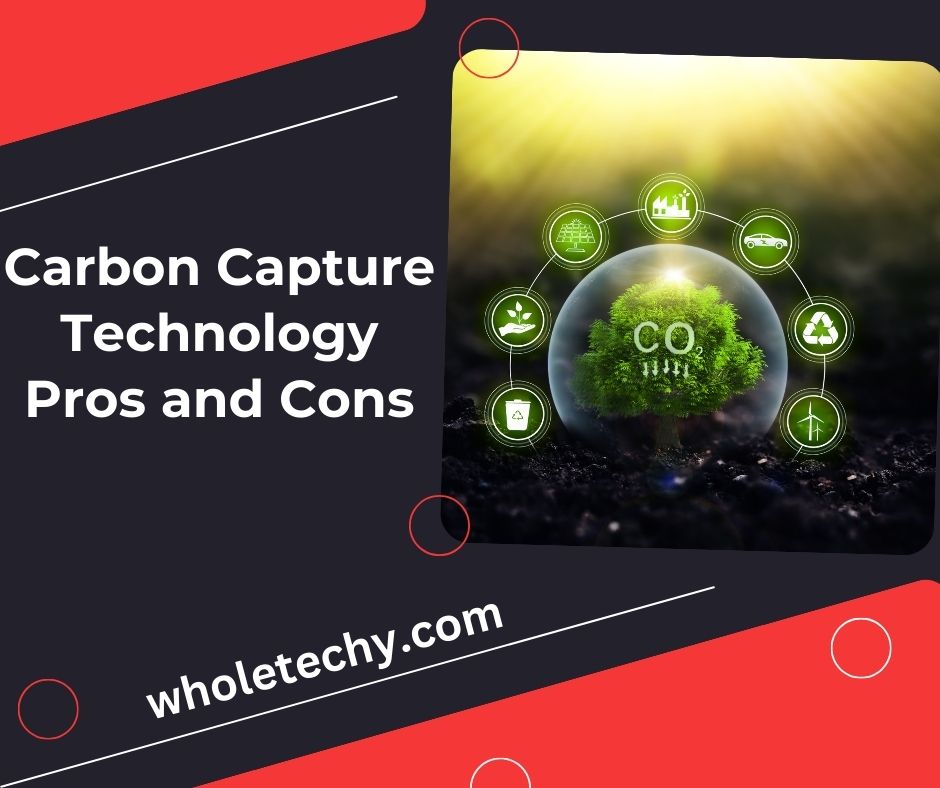You may be wondering if there is a silver bullet to combat the carbon menace as climate change intensifies. There’s hope in the stormy sea of environmental challenges thanks to Carbon Capture Technology.
There are dragons in every hero’s journey, however. While carbon is said to be snatched right out of the air by this technology, it has also brought with it a host of debates. Is it the game-changer we’ve been waiting for, or just another pitstop on the road to a greener future?
Dive into the pros and cons of Carbon Capture Technology, and let’s unravel this together. Because, after all, it’s our planet, and every choice matters.
Pros of Carbon Capture Technology
Mitigation of Greenhouse Gas Emissions:
One of the most significant advantages of carbon capture technology is its ability to reduce the amount of carbon dioxide released into the atmosphere.
By capturing and storing CO2 before it reaches the atmosphere, we can significantly decrease greenhouse gas emissions, which are a primary driver of global warming and climate change.
Enhanced Oil Recovery:
Carbon capture technology can be used for enhanced oil recovery (EOR). By injecting captured CO2 into depleted oil fields, it can help extract more oil than traditional methods.
This not only increases oil production but also ensures that the injected CO2 remains trapped underground.
Potential for Economic Growth:
The development and implementation of carbon capture technology can lead to job creation in the fields of research, construction, and maintenance of capture facilities.
As the demand for sustainable solutions grows, so does the potential for economic opportunities in this sector.
“Carbon capture is a technology that can help societies achieve Sustainable Development Goals (SDGs) and provides important economic and social co-benefits.”
Clean Air Task Force
Flexibility in Energy Choices
While renewable energy sources are essential, they can’t entirely replace fossil fuels in the immediate future.
Carbon capture allows for a more flexible transition, letting us use fossil fuels while significantly reducing their environmental impact.
Reduction in Air Pollutants
Apart from capturing CO2, these technologies can also help in reducing other harmful air pollutants.
When integrated with power plants, they can capture substances like sulfur dioxide and nitrogen oxides, leading to cleaner air.
“To meet climate goals, we must rapidly and thoughtfully scale carbon removal.”
– Senator Chris Coons
Cons of Carbon Capture Technology
High Costs
One of the primary challenges of carbon capture technology is the high cost associated with its development and implementation. Carbon capture technology can be expensive, with costs ranging from $30 to $130 per metric ton of carbon dioxide (tCO2) depending on the technology and process used.
Cost of capturing CO2 directly from the air is currently the most expensive approach, at about $600-$800 per ton of CO2.
Energy Intensive
The process of capturing, transporting, and storing CO2 requires a considerable amount of energy.
This can lead to increased fuel consumption in power plants, offsetting some of the benefits of capturing the CO2 in the first place.
Storage Concerns
While the idea of storing CO2 underground seems promising, there are concerns about its long-term viability.
There’s a potential risk of leakage, which could negate the benefits of capture. Additionally, finding suitable storage sites that can securely hold CO2 for thousands of years is a challenge.
Final Verdict
While we’ve delved deeply into the nuances of AI technology, Carbon Capture Technology (CCT) presents its own set of challenges and opportunities.
CCT stands as a beacon of hope in our fight against climate change, offering a solution to mitigate the alarming levels of carbon dioxide.
However, like AI, it’s not without its drawbacks. Balancing the pros and cons of Carbon Capture Technology is crucial for its sustainable integration into our future.










